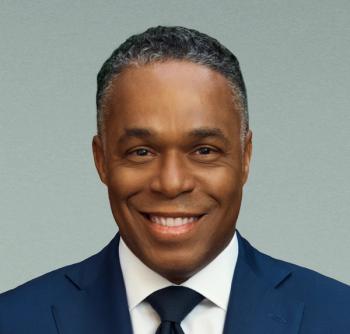
Reduce Physician Burnout by Investing in Physician Well-Being
Ad: How vendor-agnostic, point-of-care technology can improve physician quality of life and patient care.
This is the final segment in a three-part video series on how healthcare can combat physician burnout. Watch parts
When 44 percent of
Amid the hustle of HIMSS 2019, more than 125 health IT key opinion leaders and visionaries made one such investment. They left the conference for a gathering hosted by health IT innovator Holon Solutions, where attendees wrote thank-you letters, with real ink and paper, to their doctors. As the sun set, the discussion picked up. If a small gesture meant to reduce physician burnout had brought these problem solvers together, perhaps health tech could do something greater to liberate the doctors.
On one hand, the idea that tech could curb physician burnout is predictable — in health IT circles, what can’t the right tech solve? But this hope is also startling, given the role of certain technologies in proliferating physician burnout. Almost 60 percent of physicians in a recent survey pointed to bureaucratic work, such as time spent on electronic health record (EHR) documentation, as the
“For years, physicians have been unhappy. They’ve been burdened. They’re becoming clerks,” said Janae Sharp, founder of the Sharp Index, a nonprofit dedicated to measuring and stopping physician suicide, which co-hosted the event. “Healthcare has reached the breaking point. I think there are a lot of technology companies and people that could step in and fix this.”
Not just any tech, however, can tackle physician burnout. Solutions need more than snazzy slogans, attendees of the HIMSS gathering said. Health IT tech must surface the right data at the right time, meeting physicians in their workflows, at the point of care. For these solutions to scale, they must be vendor-agnostic and relevant.
Most of all, technology must make life easier for physicians.
Actionable Insights at the Point of Care
For more than a decade, Philips Wellcentive has promoted population health management and value-based care by delivering actionable information to clinicians. That task not only requires the aggregation of billions of data points from many EHR systems, but also a means to reach doctors at the point of care.
“Doctors don’t care about off-the-shelf content when it’s irrelevant and forced upon them,” Mason Beard, head of marketing and product strategy for population health management at Philips, said. “Physician burnout’s real. There’s a lot of data, but there’s not a lot of information.”
So, when the company set out to optimize its software, product leaders quickly saw the strength of Holon Solutions’ vendor-agnostic platform. Holon enabled Philips Wellcentive to surface only the insights with clinical relevance into a physician’s EHR at the point of care, fighting alarm fatigue and laying the groundwork for better outcomes.
Philips and Holon’s partnership put the physician back in the driver’s seat, with access to years of data to care for both the individual and the broader network of patients in a population.
“We’ve been working with clinicians, connecting their EHRs into our larger population health management software, for over 10 years, and Holon was the first organization to come to us and offer a way to not disrupt the physician’s workflow,” Niki Buchanan, PHM leader for Philips Wellcentive, said. Her colleague Beard added, “If you do that with the doctors’ buy-in, it’s a game changer.”
Respecting Physician Workflows
NextGen Healthcare had powerful analytics, but the EHR and health IT solutions vendor lacked a means to deliver insights within a physician’s workflow. Without that element, doctors might have struggled to leverage the information, and broad swaths of patients would have lost out. But Scott Gucciardi, NextGen’s senior vice president of solutions for vendor-agnostic markets, had a plan to elevate population health management, care management and the physicians themselves.
“Let’s bring the insights they need to the point of care within their workflow,” he said. “It should make their lives and the workflow they have to conform with more efficient and more effective.”
NextGen teamed up with Holon Solutions to deliver data from disparate sources to the EHR. The work enabled clients to view clinical data from across the care continuum, in a federated model that allowed the delivery of state-of-the-art analytics and, ultimately, value-based care.
It wasn’t the first time Holon’s technology had eased physician burnout and aided care.
For example, Great Lakes Health Connect, a health information exchange serving Michigan and beyond, worked with Holon to facilitate just-in-time messaging. This point-of-care, workflow-friendly technology might prod a doctor to check the A1C levels of a patient with diabetes, empowering physicians to do their jobs and make the most of their time with patients.
“Physicians are standing at the front end of a fire house, and the last thing they need is more information,” Brian Mack, marketing and communications manager for Great Lakes Health Connect, said. “They need actionable intelligence.”
Promoting Physician Well-Being
Healthcare strategist Shereese Maynard was correct when she noted that people want to solve the physician burnout problem. “We don’t like to think about heroes as having flaws, and our physicians are our heroes,” she said. “When they’re struggling, society struggles.”
Health IT leaders flocked to last month’s letter-writing event to thank their doctors — an act that might have appeared to be a start in the fight against physician burnout.
But the truth is, technology vendors such as Holon and their clients had already been working toward physician well-being. Through their innovations and knowledge of the clinical workflow, healthcare just might find a path toward a tomorrow with less physician burnout.
Learn more about how
Reduce Physician Burnout






































